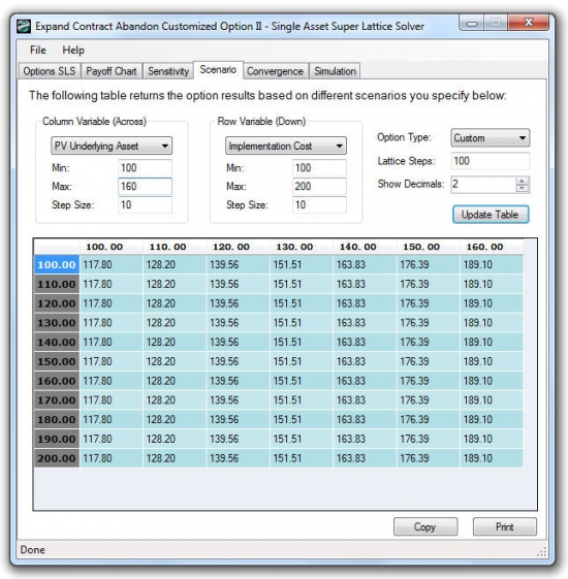

#Real options valuation risk case study book series
This paper presents an asset valuation model to show how a series of endogenous as well as exogenous factors can influence the value of an aircraft. The asset valuation for general aviation will be discussed in detail in a dedicated chapter later.Īircraft valuation and the estimation of an accurate aircraft price is undoubtedly a challenging task that has significant consequences for airlines. Therefore, in this chapter, we narrow the discussion to commercial operations of aircraft that makes the most considerable portion of the operators in the aviation industry. Even in the case of general aviation fleet used for training, it is often challenging to estimate a regular stream of revenue over a plane’s lifespan since that market is governed by factors that are different from commercial transportation. By and large, a similar observation applies to the majority of general aviation that are mainly focus on leisure and personal use. In other words, explicit revenue generation is not the primary justification of corporate jets. Even though some financial justification can be provided for acquiring and operating business jets, it is often challenging to accurately assess the exact amount of revenue generated by flying business jets. This scenario is in contrast to corporate aviation. Generating revenue and, in turn, profitability is a significant, if not the main, reason for operating a given aircraft. Commercial aircraft are primarily owned and operated by for-hire airlines to transport passengers and cargo. The valuation of commercial aircraft is slightly different from other categories of aircraft. In this chapter, we focus on commercial aircraft valuation. In the previous chapter, we reviewed the foundation of asset valuation and discussed some of the most common methodologies for estimating the value of an asset. However, the results obtained from the method proposed in this paper suggest that the project has a value of 327.65 million yuan INDEX TERMS Decision making, Estimation, Modeling, Real options, System dynamics. The findings indicate that investors are prone to losing an opportunity to invest if they only rely on traditional discount cash flows methods because the value of the project calculated by discount cash flows is -175.59 million yuan that under zero. A realistic case of the Hongwei uranium deposit in China is the basis for the presented numerical illustration of the model. Subsequently, the model applies system dynamics modeling to analyze the dynamics of the complicated mining operation system, quantify its variables and interactions, and estimate its volatility, which enables a more accurate real options valuation. To address uncertainties and managerial flexibilities that are contained in mining projects, the model integrates the static net present value calculated by traditional discount cash flows and the real options value generated by the Black-Scholes model into the total value of mining projects. Since existing valuation methods are not appropriate for mining projects affected by various uncertainties over the long term, this paper presents a hybrid investment evaluation model that is based on real options and system dynamics for mining projects. Without properly addressing these technological and educational challenges, the aviation industry likely misses an distinct opportunity for restructuring towards pandemic-resilient aviation.Įstimating the valuation of mining projects has great significance for investment decision-making. COVID-19 has uncovered and magnified the effects of severe concerns with the current aviation education system, which need to be solved by extended skill sets, modern technology, and better career perspectives. While technology ensures long-term competitiveness and sustainability, an often-ignored source of challenges are human resources and education. We discuss issues surrounding technologies for smarter aircraft, smarter airports, and smarter airlines. Our study contributes to the literature by discussing the challenges associated with technological innovation and education of aviation professionals, on the way towards pandemic-resilient aviation. Here, pandemic-resilient means that aviation stakeholders can sustain the impact of an epidemic or pandemic outbreak through a more informed reallocation of their resources and more collaborative decision making, while being able to minimize the impacts of external events. While COVID-19 has devastating effects on aviation, several recent studies have highlighted the potential of the pandemic-induced break for rethinking air transportation, hopefully orchestrating changes towards the construction of a more pandemic-resilient aviation system.


 0 kommentar(er)
0 kommentar(er)
